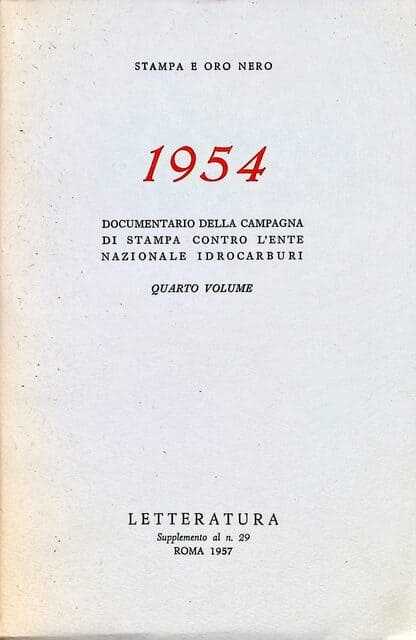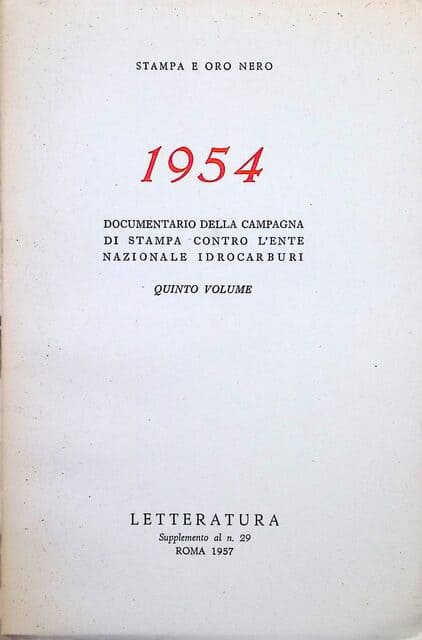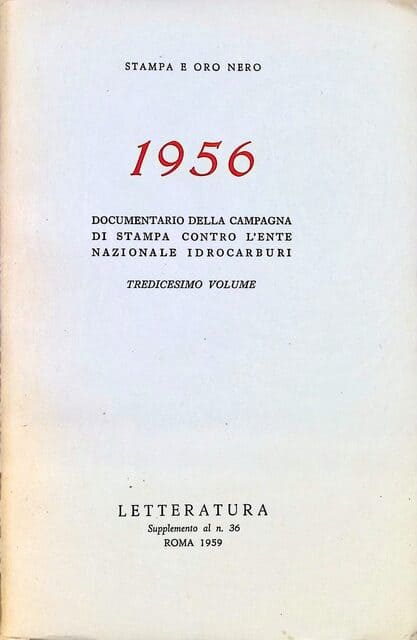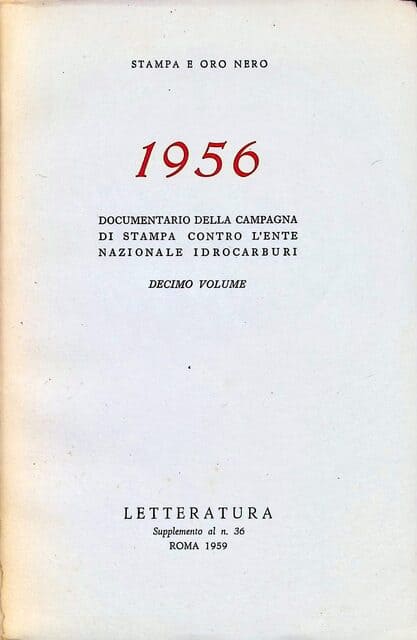Stampa e oro nero
Misunderstandings and conflicts of interest hindered but never mortified Enrico Mattei’s creative anxiety. With a sense of chivalrous challenge, he collected and reprinted in volumes the serious criticisms that Italian and foreign newspapers and magazines published against him on a daily basis from 1949 to 1962. He loved to give the collection entitled “Print and Black Gold” to major personalities and distinguished visitors, which included thirty-five volumes until the day of his death. And he said: «read and you will see that they have no imagination, that they always repeat the same things and when they have to surrender to the validity of our achievements, they change their tone and start singing some of the usual refrains».
Sixty years after the publication of the last volume of “Stampa e oro nero”, a digitization project was carried out to celebrate this work which stands out for “a polemical originality that was somewhere between the irony , retaliation and pride”, 
From the beginning out of print and in limited edition, they were published periodically as supplements to other periodicals, so as not to infringe copyright, as reiterated in a letter dated 24 January 1963 addressed to Francesco Malgeri by Giorgio Ruffolo.
The volumes were distributed not only to friends and collaborators, but also to prominent opposition figures, showing Enrico Mattei’s ironic and never-giving character.
Published since 1956, all the attacks directed against Enrico Mattei and ENI by the national and international press were collected, starting from 1949, for a total of 5138 articles.

“A precious weapon of struggle”, as can be read in the letter dated 18 March 1960 addressed by Manlio Magini to Enrico Mattei, to show how, with stubbornness and a pinch of irony, the world’s greatest challenges can be faced, fostering an understanding dissemination of global issues between the parties and contribute to political engagement.
In each volume different themes were addressed through the prefaces, introductory sections and individual chapters. The chapters focusing on relations with the United States may be considered of interest; on the Nuovo Pignone (addressed extensively in volume 4); on the oil issue in Sicily.
There were numerous newspapers that published critical articles and, for each of them, Mattei never responded, except on one occasion. Volume 35 contains all the articles by Idro Montanelli, which appeared in the Corriere della sera from 13 to 17 July 1962, and the subsequent reply by Enrico Mattei, sent to the director of the Corriere della sera and published on 27 July 1962.
Volume 36. represents a unicum within the collection, not only because it was published before volumes 34 and 35, but also because, unlike the previous ones, it has its own title: “The summit”. It contains the comments, portraits, national and international obituaries written for Mattei’s death.
Each chapter contains the title of the last article inside, as if to give a sense of circularity and completeness. Each section is dedicated to a character actor of Mattei, from his attention towards the less well-off people, to his commitment during the resistance, underlining how he contained within himself the prototype present in the works of Samuel Smiles and Michele Lessona.
The digitization and valorisation project was partly carried out thanks to the contribution for the functioning and activities of non-state libraries, provided by the Ministero della Cultura –Direzione generale Biblioteche e diritto d’autore.
The complete digitizations are available in the cataloging sheets in the library catalogue:





































